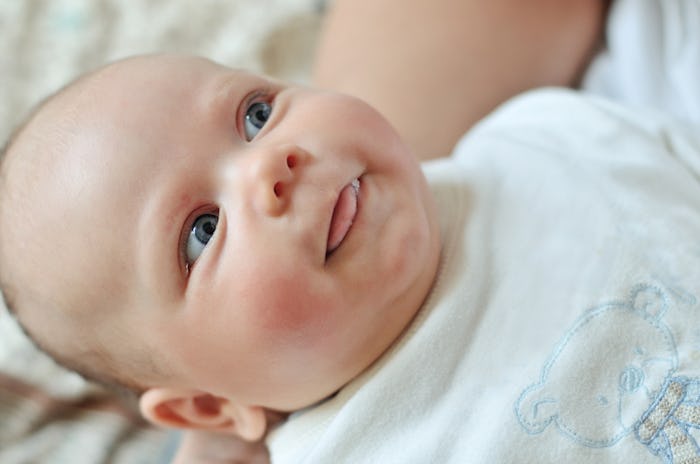Life

6 Subtle Signs Your Baby Is Overheated & Entering Dangerous Territory
No matter the time of year, parents are always worried about their baby's temperature. In the warmer months, theres a heightened potential for sunburns and dehydration, and an increased likelihood for overheating and heatstroke. But overheating isn't just a danger in the summer — it can happen just as easily in the winter thanks to too-hot rooms or wearing too many layers Although heatstroke and heat exhaustion is rare, knowing the subtle signs your baby is overheated is an important skill all parents should have.
Whether you're out and about or cozied up at home, it's equally important to pay attention to your baby's internal temperature. Although it seems like a no brainer, the task of keeping baby cool is oftentimes easier said than done. Since babies don't typically sweat, and they're unable to communicate their discomfort as easily as adults, overheating can slip under the radar without their parent or caregiver noticing until it becomes dangerous.
Along with dressing baby in weather-appropriate, loose clothing all year round, the New Kids Center urged parents to pay attention to the temperature around them, whether you're indoors or outside. Watching for these subtle signs of overheating will ensure that even the tiniest members of your family are safe and cool all year long.
1The Back Of Their Neck Is Hot
According to Baby Med, the back of the neck is an accurate way to gauge your baby's inner temperature because it's so close to their core. If their neck feels hot or overly warm to the touch, chances are that they're too hot and should be moved into the shade immediately or brought inside and dressed down a bit.
2They Have A Rapid Pulse
Baby Center noted that rapid pulse is a late sign of heat exhaustion that is progressing to potential heat stroke. Although babies already have relatively quick pulses (between 80 to 160 beats per minute in babies 1 to 11 months old, according to Health Line) if your baby's heart is racing quicker than that, they're working hard to cool down and should be moved to safety immediately or taken to the hospital if they don't cool down.
3Their Temperature Is High, But They Aren't Sweating
The aforementioned Baby Center article noted that when a baby has a temperature of over 103 degrees, they're at a serious risk for overheating. Most babies won't sweat, but they'll feel very hot to the touch. Rectal temperature is the most accurate way to test, but if you notice the other signs of overheating along with a high fever, bring them to your doctor right away.
4They're Peeing Less Than Usual
According to the Seattle Children's Hospital, many of the symptoms of overheating are caused by dehydration. In babies, dehydration is most easily spotted in their wet diaper output. If you notice your baby's pee smelling strange, looking darker than usual, or happening less frequently, nurse or feed them right away and check for other signs of overheating.
5They're Fussier Than Usual
There are a multitude of reasons for babies to be fussy, but the aforementioned Baby Med article pointed out that since babies are unable to properly control their inner body temperature, being too hot or too cold is a common reason for fussiness. It's easy to miss, but a vital symptom to watch for.
6Their Cheeks Are Flushed
According to Parenting, along with other symptoms, many babies will look flushed or red, especially on their cheeks. It might be harder to spot, especially if your baby has darker skin, or it might be the first thing you notice, but if your baby looks red and feels warm to the touch, they most likely need cooling down.